by Chuck Colbert
with additional reporting by Fred Kuhr
SAN FRANCISCO — Hundreds of LGBT news industry professionals and allies attended the National Lesbian & Gay Journalists Association’s (NLGJA) annual convention and 11th LGBT Media Summit, a four-day gathering held this year over the Labor Day weekend in San Francisco at the Westin St. Francis.
This is the organization’s silver anniversary. The theme of this year’s gathering was Coming Home, a reference to the founding of the organization in 1990 in the Bay Area by the late Leroy F. Aarons, an openly gay pioneering journalist, editor and author.
During the main convention, attendees heard keynote speakers, panelists, and workshop leaders address a variety of topics, including the LGBT movement after marriage equality, freelancing, social media trends, transgender coverage and being out in broadcast media.
The one-day summit focusing solely on LGBT media featured two plenary sessions, one on faith and LGBT youth and another on misgendering in the news. Other panels focused on HIV/AIDS coverage in LGBT media and AIDS specific media, documentary journalism with filmmakers, transgender children coming out, journalism and activism, journalists as authors and the history of LGBT media.
At the end of the day, CNN’s Richard Quest interviewed The Weather Channel’s Sam Champion on stage for the opening night reception, Sept. 3.
Windy City Times publisher and executive editor Tracy Baim, co-chair of the LGBT Media Summit, was pleased with the day’s proceedings.
“The LGBT Media Summit went very well this year,” she said in email correspondence. “We had fantastic speakers, plenaries and panels on a wide range of topics. Many general conference attendees came early to attend the sessions, so attendance was up from last year. We tried to have a wide range of voices so media could get a sense of issues ranging from misgendering to faith and families, so that reporters would have a sense of how to better cover these issues, and have connections to new potential sources.”
 |
Moderator Ashley Love (left) with panelist Miss Major
Grifin-Gracy at LGBT Media Summit luncheon plenary
(Photo: Fred Kuhr) |
The Media Summit luncheon plenary featured a panel of trans elders, including Miss Major Griffin-Gracy, Veronika Fimbres and Jamison Green, Ph.D., who discussed misgendering of transgender people in the news, culture and Hollywood. Examples of misgendering include the use of improper pronouns, abandoned names and sensationalized gender stereotypes.
“Misgendering trans people is akin to bullying LGB people,” said moderator Ashley Love, a transgender advocate.
Fimbres said, “Misgendering is the wrong calling of a person’s gender at the wrong time by the wrong people who don’t know what they are talking about. I think there is a rush to label people so quickly that the press, especially, has a tendency to rush to say things about somebody because they don’t want somebody else to break the story before them, which has a tendency to get something in the paper. It doesn’t matter what. It could be wrong, but they can prove it wrong later. Possibly and a lot of times, the police and people who cover trans murders or trans anything are misgendering and giving misinformation. And so we need to be a little slow and wait and see before we start calling people out for what they are or what we think they are.
Fimbres, the first openly transgender commissioned officer in the city and county of San Francisco, added, “The best way to find out what somebody is, if they are still living, is to ask them.”
For his part, Jamison, an advocate, educator and author of “Becoming A Visible Man,” said, “Misgendering [of trans people] is looking at you and going, ‘I am judging you now.’”
Griffin-Gracy said, “Misgendering is more than just word usage. It’s an attitude, it’s how you look at us, how you receive us, It’s … your rule and your point of view on our bodies. It’s an attempt to make us real … and not take into account and credit who we are, how we got here, what we stand for, what our abilities are, what we can and cannot do. We are judged immediately by the opinions you all hold in your heads over us. …
“Whether you he-or-she me, I don’t give a damn, as long as what you say is with some sense of respect. I’ll be he, fine. I didn’t do this shit to pass … I am too big and too beautiful to do that. … So if you want to stop misgendedring, stop judging people by what their appearances are, by what you think they are before you get to know them. Introduce yourself. Find out who the hell they are, and then meet them on their grounds.”
Griffin-Gracy is a veteran of the Stonewall Rebellion. In fact, the upcoming movie “Stonewall,” became an example of the culture and Hollywood “whitewashing” history by portraying the story of Stonewall through the eyes of a white man, rather than the trans people and people of color who actually fought back against the police on that pivotal night in 1969 that launched the modern gay rights movement.
Another controversial topic was Caitlyn Jenner, who panelists agreed did not represent the totality of trans people’s lives. After much discussion of Jenner and “Stonewall,” Griffin-Gracy had had enough. She apologized, but left the room before the discussion was over.
The LGBT Media Summit’s opening plenary, “Faith, Family, and Futures for LGBT Youth,” was moderated by Cathy Renna and featured Rabbi Debra Kolodny; Mitch Mayne, an openly gay Mormon active in his church; Dr. Caitlin Ryan, founder of the Family Acceptance Project; and Holly Montgomery, a Mormon mother of gay son.
Renna is a senior executive vice president at Target Cue, LLC, a consultancy that specializes in providing public relations and marketing communications services to not-for-profit organizations seeking to reach highly-defined audiences.
Mayne told attendees that when he began his outreach to make the Mormon culture in the Bay Area more welcoming, “the floodgates opened.”
“I can’t underscore how agonizing these stories were to hear,” he said. “Married men or women who had known they were gay or lesbian and had gone ahead and married someone of the opposite gender with the hope that over time they would change or had been told they would change.”
Mayne also heard from “single LGBT Mormons who desperately wanted to return to their family of faith,” he said. “Our faith is not something we do for three hours on Sunday. It’s very much a culture. When we extract ourselves from that culture, we lose our families and our friends. That changes our life trajectory and often in not great ways.”
The other stories Mayne heard were from parents of LGBT Mormon youth.
Wendy Montgomery shared her experience when her 13-year-old son came out.
“My neatly ordered Mormon world turned upside down. I had no context for anything LGBT,” she said. “All I knew was God considered it an abomination, evil and wrong. AIDS was God’s punishment to the homosexual community. My question came from how do I love him as a Mormon. My pain came from feeling like I was being forced to choose between the child I loved and the God I loved.”
Mayne and Montgomery credited Ryan’s groundbreaking Family Acceptance Project — a research, intervention, education and policy initiative that works to prevent health and mental health risks for LGBT children and youth — for their efforts to reconcile faith and family.
In her remarks, Ryan spoke to the risks of suicide, self-medication, drug abuse and risky sexual behavior.
For her part, Kolodny said that studies show bisexual youth have the highest rate of suicide attempts, highest substance abuse and highest incidence of lack of family support.
And yet, she said, the landscape of various faith communities over the last 50 years shows real change for the better, with more and more denominations welcoming LGBTs.
One panel focused HIV and AIDS coverage, specially in LGBT and AIDS media. This was a followup to a panel at last year’s convention about media coverage of HIV/AIDS.
 |
POZ Magazine editor in chief Oriol Gutierrez (left) with
Olivia Ford, contributing editor at TheBody.com, at “AIDS
and HIV Coverage in LGBT and AIDS-specific media”
(Photo: Fred Kuhr) |
Moderator Diane Anderson-Minshall, editor-at-large of The Advocate and editor-in-chief of Plus magazine, presented a style guide put together by Plus magazine regarding words and terms related to HIV/AIDS.
“There are a lot of stigmatizing words, and you still see it in our own media. Things like ‘full-blown AIDS.’ There’s no such thing as ‘full-blown AIDS,’” said Anderson-Minshall. “You either have AIDS or you don’t. It doesn’t blow.”
The full style guide is available at http://www.nlgja.org/wp-content/uploads/2015/03/HIV-Plus-Style-Guide-2015.pdf.
Yet another summit panel focused on the history of LGBT media.
Mike Flannagan, who writes a history column for San Francisco’s Bay Area Reporter, spoke to the difference between mainstream and LGBT media.
“The big difference is that mainstream media, even if they cover our community, [do so] for the benefit of the mainstream community,” he said. “They are not covering our communities for our communities.”
 |
Windy City Media Group’s Tracy Baim (right) with Bay Area
Reporter columnist Mike Flannagan at “Queerly Beloved:
25 Years of LGBT Media” (Photo: Fred Kuhr) |
Panelist and publisher Baim spoke to the business side of LGBT media vis-à-vis mainstream outlets.
“It is immensely frustrating to me that what little advertising there is targeting us often gets swallowed up by The New York Times.”
Referring to BuzzFeed and Huffington Post, she added, “Yes, they exist and they cover LGBTs, but it is so low cost to respect and honor and get the depth of coverage that LGBT media provides relative to a New York Times ad.”
Advertising needs to be in both mainstream and LGBT media, Baim said.
During the convention’s Authors’ Cafe, Baim also spoke about her new book, “Barbara Gittings: Gay Pioneer.” It is the first full-length biography of the woman often referred to as the mother of the gay-rights movement. This is Baim’s 11th book on LGBT history.
 |
Mark Segal recounting stories from
his forthcoming book,
“And Then I Danced”
(Photo: Fred Kuhr) |
Mark Segal, publisher of Philadelphia Gay News, also spoke at the Authors’ Cafe, telling stories from his new memoir, “And Then I Danced: Travelling The Road to LGBT Equality.” Among the stories he chronicled in the book, Segal spoke of his protest against and ultimate friendship with CBS news anchor Walter Cronkite. Segal’s book comes out in October.
For Tammye Nash, managing editor of Dallas Voice, this was her third convention as an attendee.
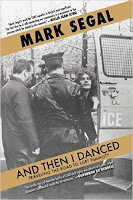
“There has always been a dichotomy at these conventions between those of us working in the LGBT media and LGBT journalists in mainstream media,” she said in email correspondence after the conference had ended. “A lot of the issues we deal with are the same, of course, but there are so many things that are different.
“I believe the main reasons NLGJA was founded were to support LGBT journalists in mainstream media in advocating for better coverage of LGBT issues and in advocating for better treatment of LGBT journalists/employees by mainstream media outlets. Those aren’t — at least, shouldn’t be! — the same issues that those of us in the LGBT media are personally concerned with. So some of the sessions on Friday and Saturday weren’t as personally pertinent for me as the LGBT Media Summit on Thursday.”
Since Nash hasn’t attended a conference since the 1990s, she was struck by how the focus of the conference had changed over time. “Sessions used to be all about getting protections for LGBT journalists in the workplace and about how to improve mainstream media coverage of our community. There was still a focus on those issues, of course, because the prejudices still exist. But, there was also focus on just improving ourselves as journalists. One of the sessions I attended Saturday was about how to improve your ‘it’ factor as a broadcast journalist. It wasn’t on the surface really relevant to me as a print journalist in the LGBT media, but I actually felt like some of the tips they offered could be translated to print. And one of the Thursday sessions I went to offered advice for LGBT journalists interested in becoming book authors. Seeing the broadening of focus is a good sign, I think.”
TOP STORY
Volume 17
Issue 6




 “There has always been a dichotomy at these conventions between those of us working in the LGBT media and LGBT journalists in mainstream media,” she said in email correspondence after the conference had ended. “A lot of the issues we deal with are the same, of course, but there are so many things that are different.
“There has always been a dichotomy at these conventions between those of us working in the LGBT media and LGBT journalists in mainstream media,” she said in email correspondence after the conference had ended. “A lot of the issues we deal with are the same, of course, but there are so many things that are different.
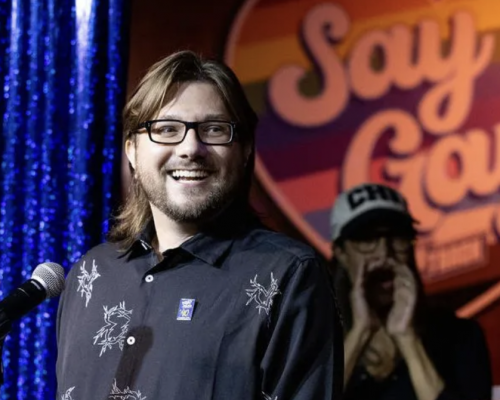
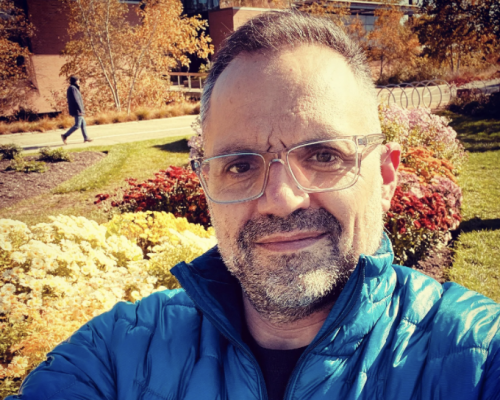

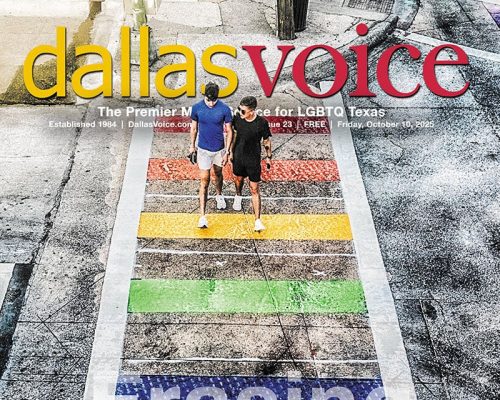

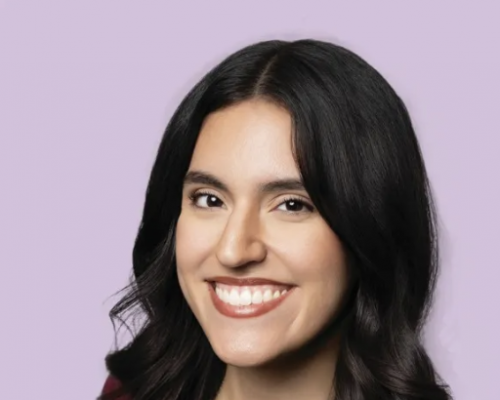
Comments
“rather than the trans people and people of color who actually fought back against the police on that pivotal night in 1969 that launched the modern gay rights movement”: Not a single phrase of that statement is factually true.